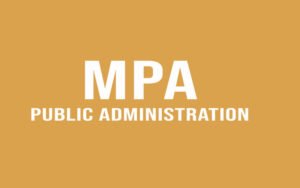What is a hurdle rate?
A hurdle rate is the minimal return required for a project or investment as a condition for approval by a manager or investor. It helps organizations decide whether to pursue a project. Projects with more risk typically have higher hurdle rates than ones with lower risk.
Private equity and hedge fund management employ it. In a private equity investment fund, the general partner can only collect performance fees (carried interest) if the limited partner’s rate of return meets the hurdle rate.
Hurdle Rate Calculation Formula
The most popular hurdle rate formula is:
WACC + Risk Premium = Hurdle Rate
A simplified WACC computation is faster and simpler. Calculating your WACC requires simply the following:
- Outstanding common stock value
- Outstanding preferred stock value
- Total debt value
- Interest rates on each
- U.S. 10-year Treasury yield
Take the following table as your data:
| Outstanding Amount | Interest Rate | Cost | |
| Common stock | $11,500,000 | 11% | $1,265,000 |
| Preferred stock | $1,500,000 | 7% | $1,050,000 |
| Debt | $6,250,000 | 5% | $312,500 |
| Totals | $19,250,000 | 13.6% | $2,627,500 |
Multiply each amount by interest to find its cost. Add the due sums and charges—total interest rate = cost / outstanding amount.
Calculate your hurdle rate by subtracting your risk premium from your WACC. Consider a 4.5% 10-year Treasury yield as your risk premium. Calculate the 18.1% hurdle rate from 13.6% + 4.5%.
What Does Hurdle Rate Tell?
Business hurdle rates are crucial, especially for future initiatives. Companies evaluate capital projects depending on their risk level.
Investments are sound if predicted returns exceed the hurdle rate. Management may not proceed if the return is below the hurdle rate. The hurdle rate is also known as the break-even yield.
As with other investment decision-making tools, the hurdle rate is an estimate. There is no assurance that returns will match or exceed calculation results.
Using Hurdle Rate
Businesses and investors use hurdle rates to assess project viability.
Investing
Investments often come with a risk premium to indicate the expected level of risk. The risk premium should increase as the chance of losing money increases, as should the return on investment. For a better hurdle rate, the WACC is usually risk-charged.
Set a barrier rate to assess investment possibilities, eliminating bias from project choice. Investors can utilize the hurdle rate to assess project financial worth, independent of intrinsic value, by assigning an appropriate risk factor.
Business Plans
There are two techniques to assess project feasibility. Initially, a corporation uses the net present value (NPV) technique and performs a discounted cash flow (DCF) analysis.
Companies set a hurdle rate, which is the minimal rate of return required for an investment or project, to discount cash flows. The discount rate determines the discounted cash flow value. Remove the total cost from the hurdle rate-discounted cash flows to calculate the project’s net present value. The corporation approves projects with favorable NPVs. Some organizations use their weighted average cost of capital (WACC) as the hurdle rate instead of the abovementioned method. Some use its average return as a hurdle to outperform a stock index.
The second technique estimates the project’s internal rate of return (IRR) and compares it to the hurdle rate. If the IRR exceeds the hurdle rate, the project will likely proceed.
Hurdle Rate Limits
Even if the monetary value is lower, hurdle rates favor projects or investments with high percentage returns. The return on project A is 20%, and the profit is $10. Project B returns 10% and makes $20. The higher rate of return of Project A, despite its lower financial worth, would likely win out.
Due to its unpredictability, risk premium selection is challenging. Projects and investments may perform better or worse. If the rate is wrong, it might waste dollars or miss chances.
Why is the hurdle rate important?
A hurdle rate, or break-even yield, is crucial in business, especially for future ventures. Companies choose capital projects depending on risk. Investments are sound if predicted returns exceed the hurdle rate. If the return falls below the hurdle rate, the investor may not proceed.
What Are Hurdle Rate Drawbacks?
Even if the monetary value is lower, hurdle rates favor projects or investments with high percentage returns. Due to its unpredictability, risk premium selection is challenging. Projects and investments may perform better or worse. Choosing the wrong hurdle rate might lead to inefficient money utilization or missed opportunities.
How Are Hurdle Rates Set?
Companies can discount cash flows at an arbitrary hurdle rate to calculate the project’s net present value. The corporation approves projects with favorable NPVs. Many organizations set their hurdle rate as the weighted average cost of capital (WACC), the entire necessary return, plus a risk premium.
The Verdict
A hurdle rate is a firm’s or investor’s minimal return to proceed with a project. Most corporations use a risk premium to set their hurdle rate, with higher rates for riskier projects and lower rates for safer ones. A discounted cash flow (DCF) analysis and internal rate of return can determine a project’s feasibility. The hurdle rate, also known as the break-even yield, can influence investing decisions.
Conclusion
- A project or investment’s hurdle rate is its minimal return.
- Hurdle rates help organizations decide whether to undertake a project.
- Riskier projects have higher hurdle rates, whereas those with lower rates are safer.
- Investors use a discounted cash flow analysis hurdle rate to calculate an investment’s net present value.
- Company hurdle rates may be their weighted average cost of capital (WACC).






























